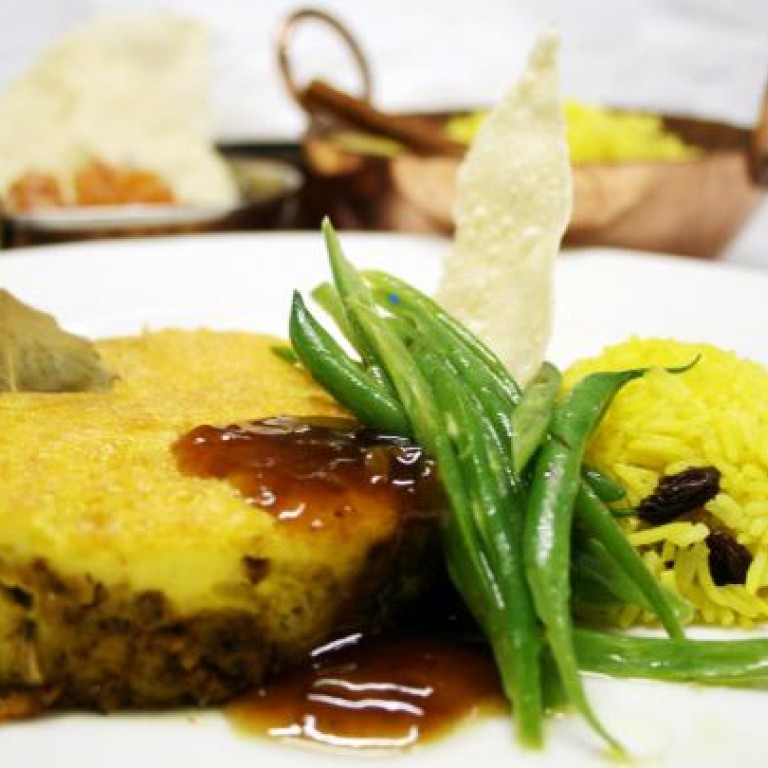
Story on a Plate: Bobotie
Cape Malay cuisine is a South African fusion of the tastes of Asia and Europe, and any visit to the Rainbow Nation is richer for sampling an item from this history-laden repertoire of dishes.
The Cape Malay community is descended from Malay, Javanese and Indian slaves, among other Asians, who were shipped to Cape Town in the 17th century by the Dutch East India Company.
These communities found themselves without access to their favourite ingredients such as coconut milk, a staple of Malay cooking, and tamarind, a popular flavour in south India. So they adapted their recipes and blended the spices they did have from ships plying the spice route, with European, mainly Dutch, cuisine.
The dishes that evolved include the , a tomato and mutton stew of Dutch origin that is seasoned with ginger, cinnamon, cardamom, cloves and chilli powder; and the , a kebab of cubes of meat alternating with aromatic vegetables and marinated either in Indian curry powder or a creamy curry-style sauce. For dessert, European-style pastries were merged with the Indian to form the , a deep-fried fritter soaked in syrup seasoned with cardamom, ginger and cinnamon.
Sweet and spicy , curried beef topped with egg custard, is a meeting of East and West. Bobotie is likely to have originated in what is now Jakarta, with the name being taken from an Indonesian dish called - shredded coconut, bay leaves and other ingredients including vegetables and fish wrapped in banana leaves and steamed.
Reuben Riffel, one of South Africa's most lauded chefs and a Western Cape native, says that while the transformation of the dish from bobotok to bobotie is not documented, bobotie came about as slaves from the region would eat roast meat on Sundays, and the following day, leftovers would be mixed with spices including bay leaves and sometimes fruits such as raisins. An egg mixture would then be poured over the top, and the dish would be baked and served with rice and vegetables.
While Cape Malay food was for many years regarded as working-class fare, dishes such as bobotie, bredie and koeksisters are enjoyed widely across South Africa today. The recipe for bobotie has remained largely intact, although nuts and South African-style fruit chutney are now sometimes added to the meat mix, according to Riffel. It is usually served with a range of salads and salsas, or as part of a bigger meal.
"The dish is enjoyed by white and coloured communities today, as well as a smaller percentage of black South Africans," says Riffel, who runs his lauded Reuben's restaurants in the One&Only Cape Town, Franschhoek, and Boland. "It's cooked and enjoyed especially on weekends all through the year."
Riffel says bobotie is an evocative dish from his childhood. "This was always the most comforting dish for me growing up," he says. "It represents the love of my mother. There is nothing as thoughtful and special as when someone gives you something that they know very well you love, especially when it's food, and time is spent to make it as delicious as possible."
Riffel cooks his own bobotie at home, but tries to make it less fatty and sweet. He swaps mince for slow-braised lamb shoulder, and introduces the spices and fruit to the meat.
Riffel recommends three restaurants serving authentic bobotie in the Western Cape: the Noon Gun Tea-Room and Restaurant and Bismillah in Cape Town, and La Petite Ferme in Franschhoek.

